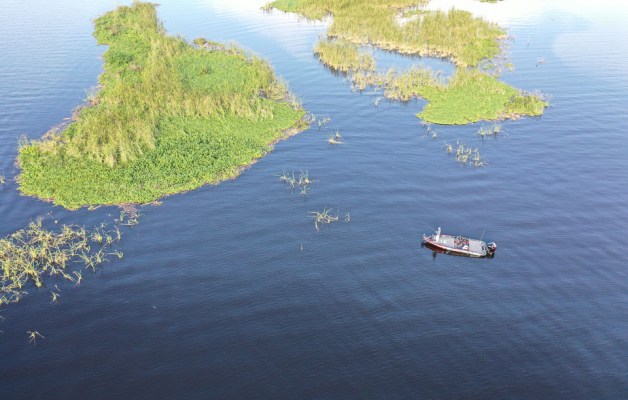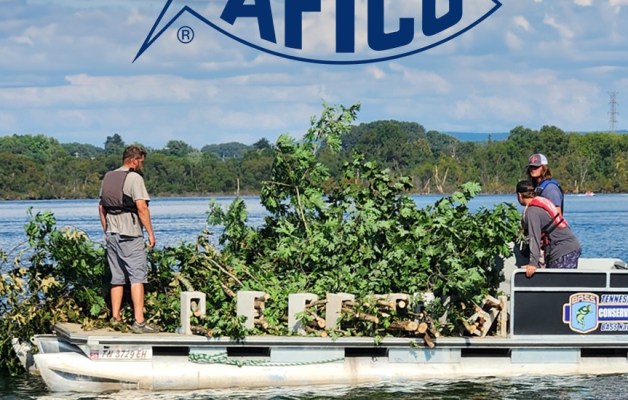ANNAPOLIS, Md. — Recent fish kills at Kerr Reservoir and Briery Lake in Virginia have been linked to largemouth bass virus by Virginia Department of Game & Inland Fisheries biologists. LMBV has not been implicated in fish kills nationally for nearly a decade. However, the Virginia incidents are a reminder that the organism may still pose some risk to largemouth bass populations.
LMBV poses no risk to humans. “The health of Maryland’s largemouth bass populations continues to be excellent,” said Don Cosden, DNR’s Inland Fisheries director. “Angler catch rates from monitored tournaments on the tidal Potomac were some of the highest we’ve seen over the last decade and individual fish condition is excellent.
We have blue ribbon fishing opportunities in the Potomac River, Nanticoke River System and the Upper Bay tributaries including the Susquehanna Flats. We encourage everyone to enjoy the fishing while being vigilant in avoiding transporting fish, debris, bait and potential problems from one place to another.” LMBV has not been linked to fish kills in Maryland.
Maryland Department of Natural Resources Fisheries Service biologists have discovered the virus in routine testing of bass populations over the last 10 years. I
n the Potomac River, three of fourteen samples tested positive for the virus including largemouth bass from two sites on the tidal river and in one smallmouth bass from a site near Sheperdstown, W.Va. Researchers from Virginia and West Virginia have identified the virus in their waters as well. In Maryland, largemouth bass have tested positive in the Nanticoke, Choptank and Patuxent Rivers, and Triadelphia Reservoir.
The virus has not been identified in Upper Chesapeake Bay largemouth bass. However, Pennsylvania fisheries biologists have found infected young of year smallmouth bass in the Susquehanna River. LMBV spreads by fish-to-fish contact, through the water or by fish eating infected prey.
Fish biologists believe that LMBV was responsible for largemouth bass losses in the late 1990s in a number of Southern and Midwestern states. Impacted bass populations typically take three to four years to recover from a major LMBV event. DNR Fisheries Service biologists offer the following guidelines to reduce the spread of this and other more disruptive invasive or pathogenic organisms, such as zebra mussels, which have recently been found in the lower Susquehanna River, and Viral Hemorrhagic Septicemia, which is a fatal fish virus found in the Great Lakes and some upper Midwestern states’ waters:
- Never transfer live fish from one body of water to another
- Never discard fish parts or unused bait in any body of water
- Drain water from livewells, bilges, engines, bait buckets and hoses and pumps before leaving the launch area; clear mud, vegetation and debris from trailers
- Disinfect livewells daily and particularly when moving between bodies of water
LMBV may reduce a fish’s tolerance to stress. Anglers can increase the chances of survival of fish intended for release by following these guidelines:
- Handle the bass gently and return to the water as soon as possible, especially when the water is more than 80 degrees Fahrenheit
- Maintain good water quality in your livewell by keeping the water aerated and recirculated at 3 to 5 degrees cooler than the ambient water. Add non-iodized salt to livewells at a rate of one tablespoon per 10 gallons of water, or use one of the commercially available products for maintaining fish
- Do not overcrowd bass. One pound of fish per gallon of livewell water is a good maximum ratio
- Stage tournaments during cool-water months, particularly in areas where LMBV has been noted
- Report dying or dead bass, or bass that are swimming poorly in circles near the surface of the water, by calling the Maryland Department of the Environment at 800-285-8195, Monday through Friday, from 8 a.m. to 4:30 p.m., or 877-224-7229 after hours
- Report a largemouth bass kill with DNR Tidal Bass Manager Dr. Joe Love at 410-260-8257
Maryland DNR biologists will host an LMBV and general bass fishing discussion at the 2011 Fishing Expo & Boat Show at the Maryland State Fair Grounds in Timonium at 1 p.m. on Saturday, Jan. 15.




